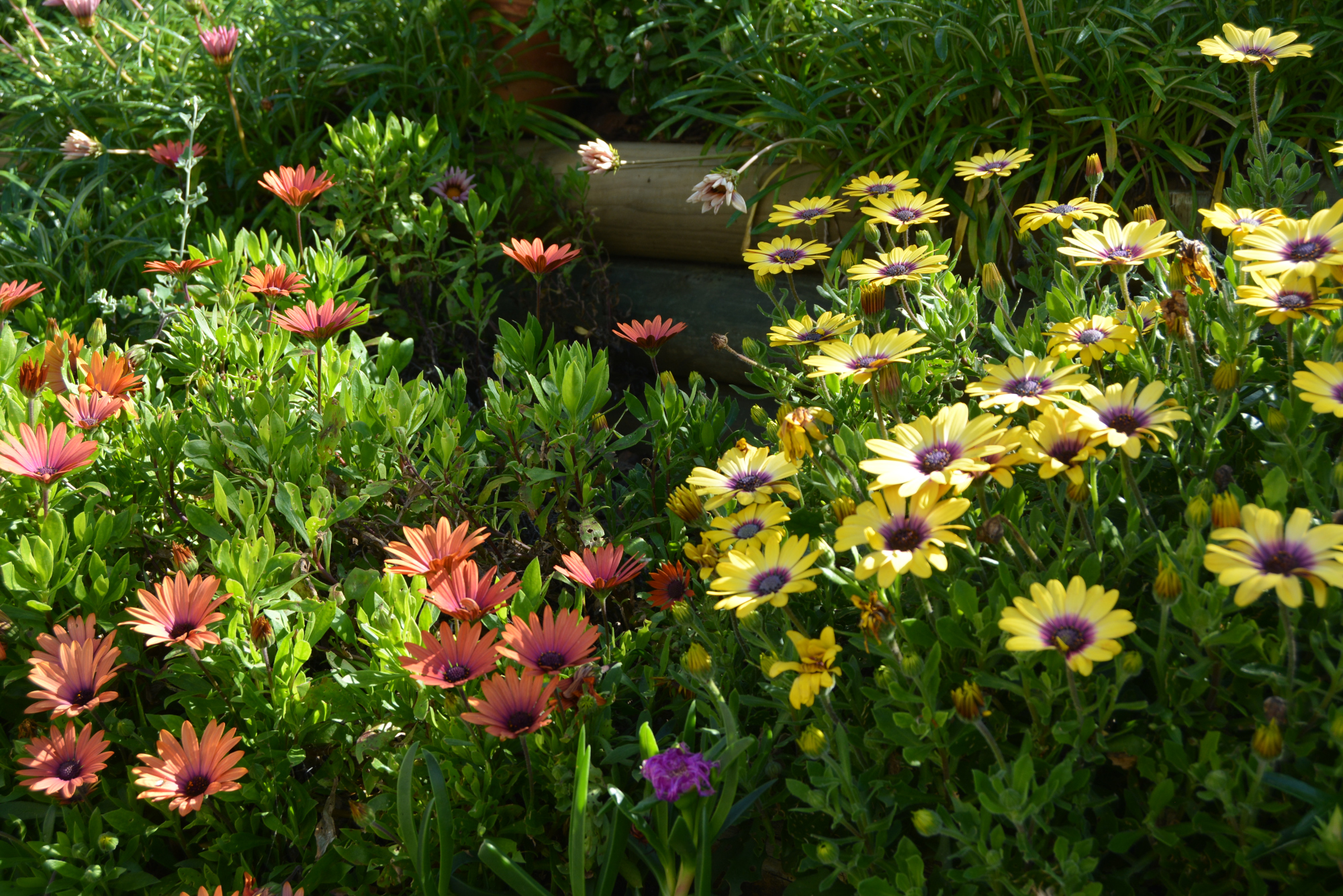Christine Percy has been living at the sprawling Sardinia Bay Golf & Wildlife Estate for just over a year and never in her wildest dreams did she envisage the burst of colour she awakens to each morning.
What was once simply plot No 82 with a steep and unpractical incline at the one end has been transformed by Christine into a garden that is beaming has been beaming a kaleidoscope of colours this spring.
She insists that her husband, Alan, is actually the one with the green vision and that the two of them could not have done it without the guidance of Russell Darlow from the nursery across the road.
Yet, there is no doubt that Christine, a nursing sister, knew what she wanted when confronted with the awkward piece of land behind their house, which forms part of the 100ha coastal residential complex in Gqeberha.
“It was suggested that I begin putting in plants in that area and gradually develop a garden,” she said. “But I was far too impatient and fussy to wait for that to happen and I didn’t want dust and sand blowing into my house.
“I contacted Russell and told him to do whatever he needed to but to do so as soon as possible.”
Although she left the digging and planting to him, Christine was specific in her brief.
“It had to be indigenous plants and in my previous garden I only had green, white, purple and blue. Russell said he wasn’t quite sure if he could set it up with just those colours and I decided to trust his judgment.
“I wouldn’t have chosen a colour such as yellow but he followed his instincts and we’re glad he did because it is far prettier now with the wide range of colours.”

The first thing he did was “weatherproof” the incline by creating four levels with gum poles to form retaining walls.
“You can plant on a slope but everything will just run down, so you have to create those levels for the water to sit there rather than pour down the slope,” he explains.
“Other than that, you just have to find plants that can grow in a bit of shade while being able to take the summer sun. It was a bit of a challenge because not many plants like too much shade, but you can find those which are endemic to the area.”
Christine says the constant display of colour makes all the difference to the previously unloved area.
“When I thought of indigenous, I just saw fynbos and aloes,” she confesses. “But when you go out there and see how much we have that’s indigenous, you realise there is a huge selection.
“You just need to speak to the right people.”
She says the flowers are currently quite spectacular.
“There are colours all year round, just not always as prolific as they are right now.”
Two protected milkwood trees on the top tier of the slope was one of the curveballs thrown at her.
“They presented a problem because one was leaning over quite a bit, creating a lot of shade. It also looked quite precarious.”
Conservation experts were called in to assess the situation and gave them the all-clear to transplant both.
“As it turned out, we decided to keep one and we are grateful we did because we’ve managed to develop the garden around it and now that area blends in with the natural environment at the top.”
Contact me please
As the flowers and plants flourish, Christine says it is just a case of trimming the garden every so often.
“Gardens need structure,” says Russell. “If you leave it, it just starts going all over the place.
“You can see some of those pin proteas are starting to take strain because they grow much slower than other plants. You just need to give them space.
“At the lowest level we allow some of it to flow over the wooden structure to create a hanging gardens effect.”
As she reflects on the journey from bare to luscious, Christine appreciates the difference that a little bit of creativity can make.
“At first, I was so irritated by this huge mound of ground I was looking at. I just hit a wall and it seemed I couldn’t even have a garden.
“But my husband is the one with the vision. He told me to calm down and now, in hindsight, I’m thrilled.”
That mound turned out to be a blessing in disguise.
“I now think if I had been given a flat piece of ground to work with, I would have been bored,” admits Christine. “What we have managed to create here is so very different.”
